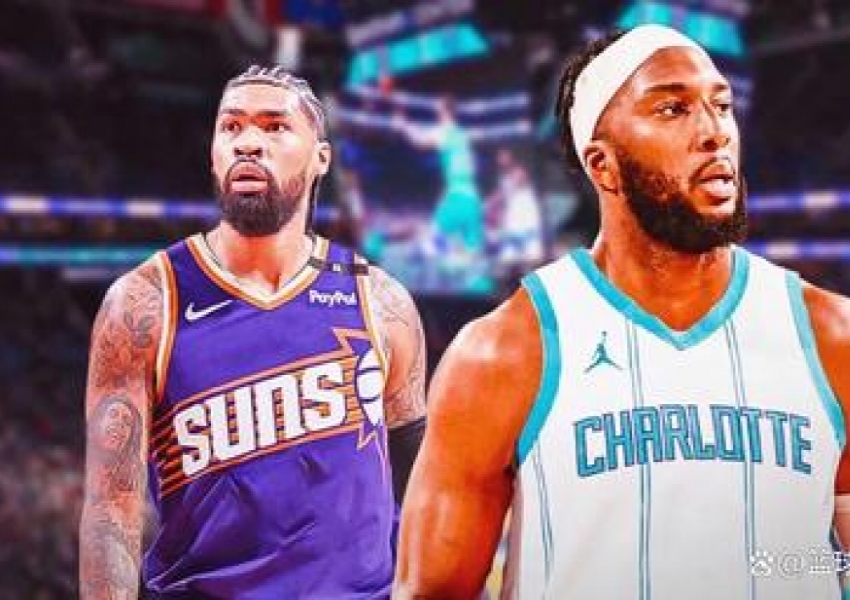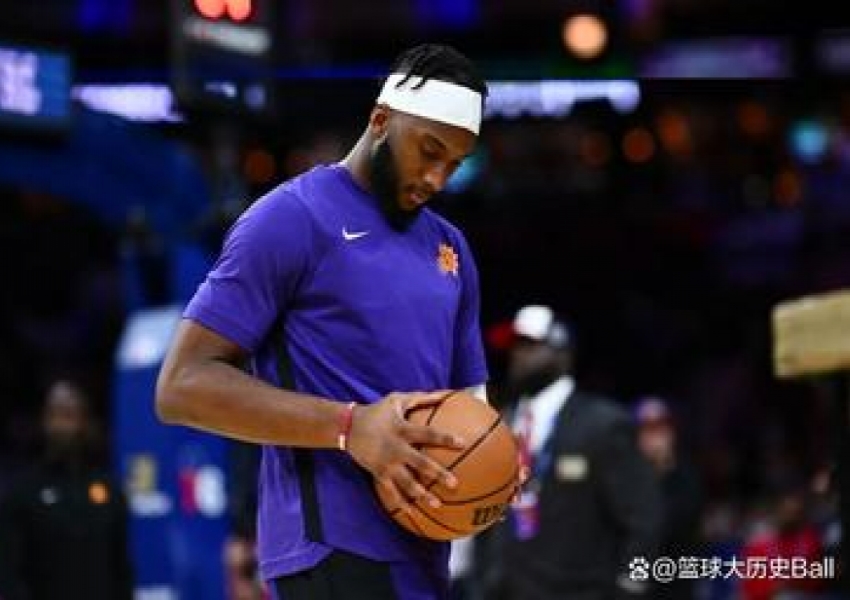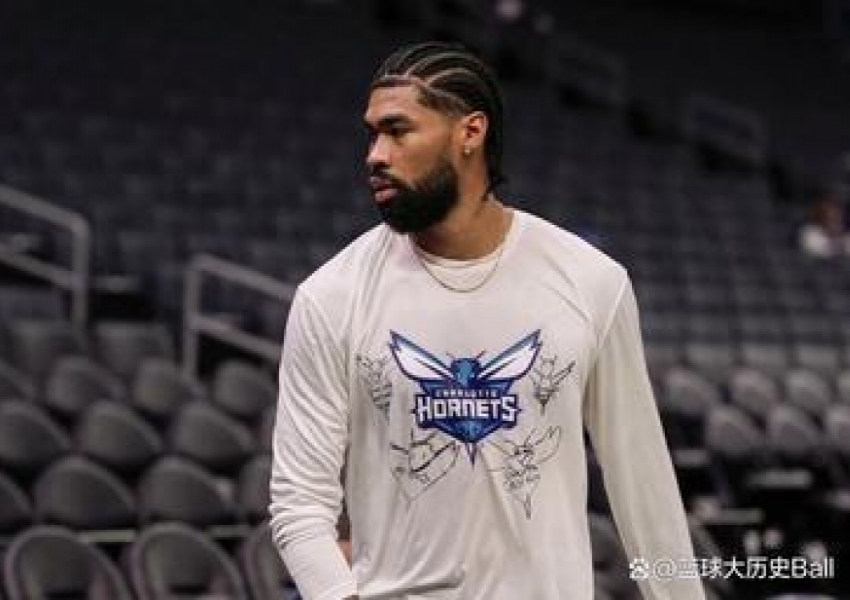Suns-Hornets Trade: Richards is Tempting, But Issues Remain Unsolved
The Phoenix Suns have finally made a move to address their glaring weaknesses this season. According to Shams Charania, the Suns have struck a trade deal with the Charlotte Hornets, sending forwards Josh Okogie and three second-round picks (2026 and 2031 Denver second-round picks, 2031 Suns second-round pick) to the Hornets in exchange for center Mark Williams. This deal comes at a crucial juncture in the season as the Suns are struggling to secure a stable position in the playoff race, and their interior defense and rebounding have been a major issue throughout the year.

The Suns' Struggles in the Paint
The Suns have been noticeably lacking in the paint this season. With a team that includes players like Devin Booker, Kevin Durant, and Bradley Beal, Phoenix has no shortage of scoring firepower, but when it comes to rebounding and protecting the rim, they’ve been one of the weakest teams in the NBA. Through 39 games, the Suns rank 25th in the league in total rebounds per game, with only 42.2 boards per contest. Their offensive rebounding is even worse, with an abysmal 9.2 per game, placing them at 28th in the league.

Their most recent game, a 117-122 loss to the Atlanta Hawks, highlighted just how much the Suns are struggling in the paint. The Hawks dominated the glass, recording 54 rebounds and 20 offensive boards. In contrast, the Suns managed just 37 rebounds and six offensive rebounds. This one-sided battle on the boards likely served as a wake-up call for the Suns’ front office, pushing them to finally make a move to shore up their interior defense and rebounding.

Okogie’s Departure and the Suns’ Salary Structure
Okogie’s departure is not unexpected, given his role on the team and the Suns’ salary cap situation. Last offseason, the Suns re-signed Okogie to a two-year, $16 million deal, a contract that was widely considered a bit of an overpay. The Suns were already over the luxury tax threshold at that point, and Okogie’s deal made it difficult for them to execute future trades without taking on bad contracts. As a result, Okogie became a trade asset for the Suns.
While Okogie has been a solid player for Phoenix, his performance this season hasn’t been remarkable. In 25 games, Okogie has averaged 6.0 points, 2.9 rebounds, and 0.6 assists in just 14 minutes per game. His role has diminished over the course of the season, with his last two games seeing him completely out of the rotation. Okogie has simply failed to make a significant impact for the Suns this season, and with his contract on the books, he was expendable in this trade.
The Arrival of Richards: A Potential Boost for Phoenix
In return, the Suns have received center Mark Williams from the Hornets, a player who fits some of the team’s needs but also comes with his own set of concerns. Williams, at 7 feet tall, is a traditional big man who excels at finishing around the rim and is an active rebounder. He’s only 27 years old, so he’s still in the prime of his career. This season, Williams has appeared in 21 games for the Hornets, averaging 8.9 points, 7.5 rebounds, 1.3 assists, and 1.2 blocks per game. His field goal percentage is an impressive 56.1%.
Williams has shown that he can contribute significantly when given the minutes. When starting in place of the injured Hornets’ starting center, Mark Williams has averaged 11.3 points, 10.2 rebounds, and 1.7 blocks over 9 games. Given the Suns’ struggles in the paint, this type of production would be a welcome addition. And at a salary of just $5 million per year, Williams is an affordable and cost-effective option for the Suns.
But while Richards brings immediate value, his limitations can’t be overlooked. Despite his solid rebounding and rim protection, Richards still lacks polish as a passer, and his ability to facilitate in the Suns’ offense is questionable. The Suns’ offense relies heavily on ball movement and creating open shots for their stars, so a big who cannot contribute in that area may struggle to fully integrate into their system. This is a skillset that both Jusuf Nurkic and Mason Plumlee possess, but it’s a feature that Richards doesn’t yet offer.
The Suns’ Growing Logjam at Center
Another issue with the trade is the Suns’ increasingly crowded frontcourt. After acquiring Richards, the Suns now have four centers on the roster: Richards, Nurkic, Plumlee, and veteran Andre Iguodala. While Iguodala is more of a swingman, the presence of three traditional centers raises concerns about the team’s rotation. Phoenix already has a logjam at the center position, and it remains to be seen how the team plans to manage the minutes distribution between these players.
Nurkic has been a major disappointment since joining the Suns in a trade for Deandre Ayton. While the team hoped that Nurkic could be a reliable presence in the paint and a legitimate rim protector, his performances have been inconsistent. This season, Nurkic has been relegated to the bench and has not been a factor in the rotation, often sitting out entire games. With a contract that pays him $18 million this season and $19 million next season, Nurkic has become a difficult asset for the Suns to move, despite his potential.
What Does This Trade Mean for the Suns’ Future?
While adding Richards addresses some immediate needs for the Suns, the move also raises several questions about their long-term strategy. The Suns have now depleted their already thin supply of draft assets, with their only remaining tradeable asset being a 2031 first-round pick. This puts them in a difficult position if they wish to make further upgrades during the season.
Additionally, the Suns’ interior depth remains a question mark. Even with Richards, the team still lacks a truly elite rim protector, and their offensive rebounding struggles may continue to haunt them. Furthermore, the Suns will need to find a way to manage the crowded center rotation and make sure that all players, particularly Richards, get enough minutes to make an impact.
Ultimately, this trade signals the Suns’ desire to bolster their roster for a playoff run, but it doesn’t solve all of their issues. The team still has significant weaknesses to address, particularly in terms of depth and the overall balance of their lineup. The Suns may be one more move away from truly competing for an NBA championship, but for now, they are left hoping that Richards’ arrival will make enough of a difference to get them back on track.
Copyright Statement:
Author: focusnba
Source: FocusNBA
The copyright of this article belongs to the author. Reproduction is not allowed without permission.
Recommended Blog
- Mitchell’s Downfall: What Happened to the Once Explosive Star?
- 38 Points, 44 Points, 55 Points! The Eastern Conference’s Best Point Guard, Jalen Brunson, Is Back on Fire!
- Breaking News: Yang Hansen Signs with Klutch Sports, Secures NBA Future
- Signed and Delivered! Lakers Welcome Their New 7’0” Center
- DeMarcus Cousins Signs Overseas: A New Chapter Begins
- Shocking Trade Rumor: Zach LaVine for Zion Williamson? Pelicans Have Reached Their Limit
- Confirmed: Ja Morant Suffers AC Joint Sprain—Is the NBA Witnessing Another Injury-Prone Superstar?
- Dwight Howard Declares Permanent Boycott of the Lakers: A New Low in NBA Drama
- Signed and Sealed: NBA’s Tallest Giant Joins the Chinese Basketball League
- Blockbuster Trade: Lakers and Nets Pull Off 5-for-2 Deal, Russell Heads Back to Brooklyn
Hot Blog
- Tension in New York? Mikal Bridges Calls Out Thibodeau’s “Plantation-Style” Rotation!
- Kevin Durant = Three First-Round Picks? In Just Two Years, the Suns Lost Big!
- Major Decline! What Is De'Aaron Fox’s True Level with the Spurs?
- Completely Out of the Rotation! Why 25-Year-Old Cam Reddish Can't Get on the Court Anymore
- A Miraculous Buzzer-Beater—But What Level Is Kawhi Leonard Really At Now?
- 4,000 Threes! Just How Impossible Is Stephen Curry’s Latest Record?
- $110 Million Over Two Years—Butler Was Worth Every Penny
- $293M Supermax and an MVP? Is There Any Doubt Left for Shai Gilgeous-Alexander?
- $418M for Luka Dončić? Is the Lakers' New Star Worth It?
- 31-21-22! Did Jokic’s Historic Triple-Double Just Reignite the MVP Race?